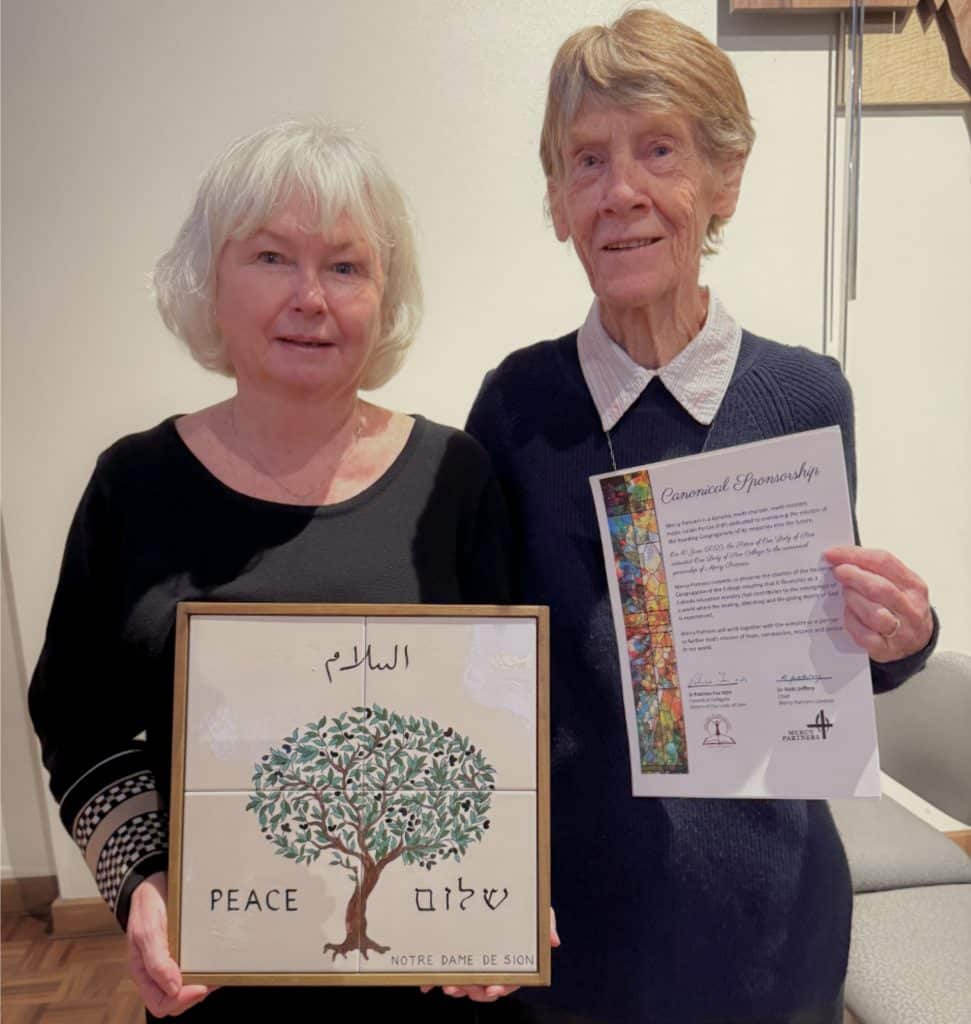


As a result of the diminishing number of religious sisters and brothers around the world, the governance of Church ministries especially those of education, health, aged care and social welfare, has over the years, become a significant issue in many parts of the western world.
Lay people are increasingly being called to governance responsibilities and stewardship – both canonically and civilly for Church ministries. To meet the evolving needs within the Church, a new governance structure, referred to as Ministerial Public Juridic Person (MPJP) has emerged within the Church.
MPJPs, comprising mainly of committed lay people, are created under the Code of Canon Law which enables it to act in the Church’s name. Therefore, they have the authority to govern Catholic schools and other Church ministries.
MPJPs have operated in Australia for over 25 years. They have provided stable governance and the continuance of the Catholic identity of Church ministries, ensuring their ministries continue to evolve and meet the needs of the disadvantaged and marginalised, of Catholic Education, the contemporary Church and society in general.
The sisters in Australia recognised that for the College in Box Hill to continue to thrive as a Sionian school, the governance of the College needed to be assigned to a MPJP. Five years ago, the sisters in Australia began a discernment process that led them to join an existing MPJP called Mercy Partners. Mercy Partners is a dynamic multi charism, multi ministry MPJP dedicated to continuing the mission of the founding congregations of its ministries into the future.

Sr Patricia Fox, right, shows the Commitment Certificate between NDS and Mercy Partners and presents a plaque to Dr Ricki Jeffery, Mercy Partners Board Chair, left.
On 10th June 2025, the Sisters of Our Lady of Sion entrusted Our Lady of Sion College to the canonical sponsorship of Mercy Partners thus becoming our third Heritage School*, along with Marist Sion College, Warragul and Catholic College, Sale.
The Ritual of Transition was a time for those who had gathered, to ponder in a spirit of thanksgiving, the journey of the College from its beginnings in June 1928 with 15 students to the present time. The ritual included a brief reflection of Theodore’s life, the sisters’ coming to Australia in 1890, the establishing of the College at Box Hill in 1928, and the recent process of discernment that resulted in transitioning the canonical and civil governance of the College to Mercy Partners.
The Liturgy of the Word, Isaiah 42:1-9, was followed by the Ritual of Transition during which the canonical sponsorship of the College was transferred to Mercy Partners Ltd. A plaque crafted in Jerusalem by Armenian potters was also given to be placed in the headquarters of Mercy Partners along with symbolic gifts from their other ministries. The directors of the College, the principal, the leadership team, members of the staff and College captains then committed to continue to live and promote the Sion charism and culture of the College.
The evening concluded by the sharing of a meal and conversation in a joyful spirit of hope.
*A Heritage School is one that was founded by a Religious Order and is now governed by another entity, such as a MPJP, which is committed to maintaining the charism of the founding congregation. The Sisters and the Sion Mission and Formation Team are invited regularly to our Heritage Schools to provide charism formation and to attend major school celebrations.

At its centre is the olive tree. In Psalm 52, the Psalmist says, “I am like a green olive tree in the house of God. I trust in the steadfast love of God forever and ever” (Ps 52:8).
In a circular to the entire congregation at Christmas 1875, Theodore wrote about the importance of unity and maintaining relationships within the congregation using the symbol of a tree:
“The tree of Sion can only exist in conditions of unity; first because this unity constitutes its life, its rule and its distinctive character; then, because its branches, stretching from west to east, are separated from each other by great distances. If they cease to communicate with each other, their life will soon dry up, and they will become strangers to one another.”
The olive tree or branch has also become a universal symbol for peace, representing the peace that Jesus offers, which brings justice, wholeness, and harmony to all of creation. In a talk on Psalm 76 in 1849, Theodore spoke of God taking residence in Jerusalem, the “City of Peace”, resting in Sion. He concludes this talk with the imperative:
“Make every effort to maintain peace! Peace is the first word of the Gospel; it is also the last: ‘Peace be with you!’”
Surrounding the olive tree is the word “peace”, written in English, Arabic (salaam), and Hebrew (shalom), symbolising Theodore’s profound desire for peace, unity, and respect between the Abrahamic faiths: Judaism, Christianity, and Islam. In 1857, as Muslim, Jewish and Christian families wanted to send their children to the newly established Sion school, Theodore wrote:
“Ismael should mingle with Israel in Catholic Sion.”